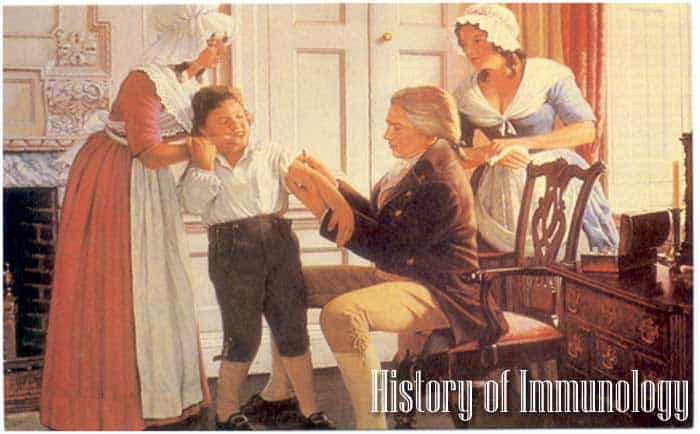
Table of Contents
- Origin of Immunology
- History of Immunology & Timeline
Origin of Immunology
The word “immunity” comes from Latin, which means “free of or exempt“. It was initially used in the context of being free of the burden of taxes or military conscription. When we talk about immunology, we have to talk about vaccines invariably.
A vaccine is a drug that uses a bacterial or viral antigen (e.g., a germ, bacterium, or virus), which might be already killed, generally with formal or great heat, or maybe living but attenuated.
The word “Vaccination,” coined by Jenner for his treatment (from the Latin, vacca means a cow), was adopted by Louis Pasteur for immunization against any disease.
Did you know?
From various archaeological evidence, it was evident that man knew about diseases and their ill effects. In those days, diseases were considered a punishment due to bad deeds or evil thoughts, and the recorded history of immunology goes as far back as 430 B.C.E. .
History of Immunology & Timeline
Here’s the complete history of immunology in chronological order, starting with the earliest.
5th Century
| Year | Progress in the field of immunology |
|---|---|
| 5th Century B.C.E | 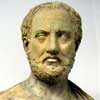 The concept of immunity from disease can be traced back at least to Greece in the 5th century B.C. During this time, Thucydides observed and wrote about individuals who recovered from the plague raging in Athens (Greenberg 2005). The concept of immunity from disease can be traced back at least to Greece in the 5th century B.C. During this time, Thucydides observed and wrote about individuals who recovered from the plague raging in Athens (Greenberg 2005). |
![]()
10th Century
| Year | Progress in the field of immunology |
|---|---|
| 10th Century | However, the earliest recognized attempt to intentionally “induce” immunity to an infectious disease was in the 10th century in China, where smallpox was endemic or regularly found. |
![]()
16th Century
| Year | Progress in the field of immunology |
|---|---|
| 1546 | 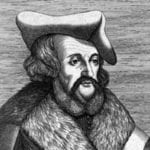 Italian physician Girolamo Fracastoro proposed the theory of contagious diseases as published in his book entitled On Contagion and Contagious Diseases. Read More Italian physician Girolamo Fracastoro proposed the theory of contagious diseases as published in his book entitled On Contagion and Contagious Diseases. Read More |
| 1549 | 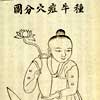 The earliest account of inoculation of smallpox (variolation) occurs in Wan Quan’s (1499–1582) Douzhen Xinfa. Around the fifteenth century, applying powdered smallpox “crusts” and inserting them with a pin or poking device into the skin became commonplace. The earliest account of inoculation of smallpox (variolation) occurs in Wan Quan’s (1499–1582) Douzhen Xinfa. Around the fifteenth century, applying powdered smallpox “crusts” and inserting them with a pin or poking device into the skin became commonplace. |
![]()
17th Century
| Year | Progress in the field of immunology |
|---|---|
| 1670 | The process of “variolation” (or inoculation), which involved the exposing of healthy patients to the material from the lesions caused by the disease, was introduced by Circassian traders (Price 2015). |
![]()
18th Century
| Year | Progress in the field of immunology |
|---|---|
| 1718 | 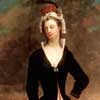 Smallpox inoculation in Ottoman Empire realized by West. Lady Mary Wortley Montagu, the wife of the British ambassador to Constantinople, observed the positive effects of variolation on the native population and had the technique performed on her own children. Smallpox inoculation in Ottoman Empire realized by West. Lady Mary Wortley Montagu, the wife of the British ambassador to Constantinople, observed the positive effects of variolation on the native population and had the technique performed on her own children. |
| 1721 | Mary Wortley Montagu’s daughter was the first person to be engrafted in Great Britain. |
| 1774 | 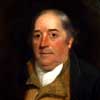 A farmer named Benjamin Jesty variolated his wife with the vaccinia virus obtained from “farmer Elford of Chittenhall, near Yetminster.” First record of anyone using the vaccinia virus to “protect” against smallpox. A farmer named Benjamin Jesty variolated his wife with the vaccinia virus obtained from “farmer Elford of Chittenhall, near Yetminster.” First record of anyone using the vaccinia virus to “protect” against smallpox. |
| 1798 | 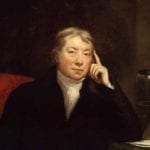 Edward Jenner developed a vaccine for smallpox. Jenner inoculated an 8-year-old boy named James Phipps with material obtained from a cowpox lesion. The results were conclusive but were met with great resistance by the Church. Edward Jenner developed a vaccine for smallpox. Jenner inoculated an 8-year-old boy named James Phipps with material obtained from a cowpox lesion. The results were conclusive but were met with great resistance by the Church. |
![]()
19th Century
| Year | Progress in the field of immunology |
|---|---|
| 1837 | 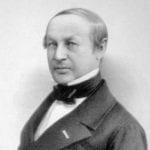 Theodore Schwann, a German physiologist first came up with a physio-chemical explanation of life and explained yeast multiplication in fermentation. Theodore Schwann, a German physiologist first came up with a physio-chemical explanation of life and explained yeast multiplication in fermentation. |
| 1838 | 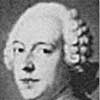 Charles Cagniard Latour, a French physicist confirmed the role of yeast in fermentation. Charles Cagniard Latour, a French physicist confirmed the role of yeast in fermentation. |
| 1840 | 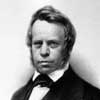 Jacob Henle, a German physician, pathologist, and anatomist came up with the concept of the germ theory of disease. Jacob Henle, a German physician, pathologist, and anatomist came up with the concept of the germ theory of disease. |
| 1844 | 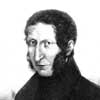 Agostino Bassi stated the idea that not only animal but also human diseases are caused by other living microorganisms. Agostino Bassi stated the idea that not only animal but also human diseases are caused by other living microorganisms. |
| 1850 | 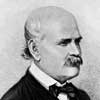 Semmelweis, Hungarian physician discovered that the incidence of puerperal fever (also known as “childbed fever”) could be drastically cut by the use of hand disinfection in obstetrical clinics. Read More Semmelweis, Hungarian physician discovered that the incidence of puerperal fever (also known as “childbed fever”) could be drastically cut by the use of hand disinfection in obstetrical clinics. Read More |
| 1860s | The germ theory of disease was proposed. However, evidence is insufficient to prove that microorganisms can cause several diseases. Confirmation of the role of microbes in fermentation. |
| 1862 | 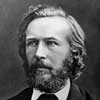 Ernst Haeckel was a German biologist explained that in an organism’s immune system, phagocytosis process occurs where certain foreign microorganisms (such as amoeba) attach to the cell surface either to destroy it or feed on it. Read More Ernst Haeckel was a German biologist explained that in an organism’s immune system, phagocytosis process occurs where certain foreign microorganisms (such as amoeba) attach to the cell surface either to destroy it or feed on it. Read More |
| 1867 | 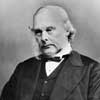 Joseph Lister invented aseptic practice in surgery using carbolic acid. This method has greatly improved surgical practice, especially in reducing infections and complications due to contaminations. Joseph Lister invented aseptic practice in surgery using carbolic acid. This method has greatly improved surgical practice, especially in reducing infections and complications due to contaminations. |
| 1876 | 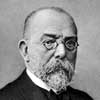 Robert Koch, German microbiologist published the work on anthrax. Read More Robert Koch, German microbiologist published the work on anthrax. Read More |
| 1877 | 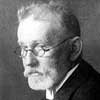 Paul Ehrlich, a German physician demonstrated that mast cells (a type of white blood cells) are an essential part of the immune and neuroimmune systems. Paul Ehrlich, a German physician demonstrated that mast cells (a type of white blood cells) are an essential part of the immune and neuroimmune systems. |
| 1878 | 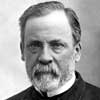 The germ theory of disease was finally postulated by Louis Pasteur. This theory confirmed that some diseases are indeed caused by microorganisms. The germ theory of disease was finally postulated by Louis Pasteur. This theory confirmed that some diseases are indeed caused by microorganisms. |
| 1880 | During this period, the theory of using the live bacterial virulence culture in the vaccines could act as immunity for chicken cholera and anthrax was proposed. |
| 1881 | 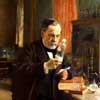 Pasteur vaccinated 24 sheep, 1 goat, and 6 cows with five drops of the living attenuated anthrax bacillus. On May 17, he inoculated the animals with a less attenuated strain. On May 31, all of the animals received viable virulent anthrax bacilli. Pasteur vaccinated 24 sheep, 1 goat, and 6 cows with five drops of the living attenuated anthrax bacillus. On May 17, he inoculated the animals with a less attenuated strain. On May 31, all of the animals received viable virulent anthrax bacilli. |
| 1882 | 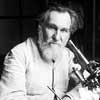 Ilya Mechnikov (Russian Zoologist) successfully developed the first full theory of immunology. Robert Koch isolated the bacterium Mycobacterium tuberculosis and, as its name suggests, the causative agent of tuberculosis. Ilya Mechnikov (Russian Zoologist) successfully developed the first full theory of immunology. Robert Koch isolated the bacterium Mycobacterium tuberculosis and, as its name suggests, the causative agent of tuberculosis. |
| 1885 | Louis Pasteur discovered the method to treat germ-borne diseases like tuberculosis, anthrax, and cholera. In honor of Jenner’s initial discovery of the smallpox vaccine, Pasteur called his treatment vaccination (Microbiology 2006). |
| 1886 | Louis Pasteur also developed the process now known as pasteurization. In this process, the liquid is boiled and then cooled to kill the bacteria that cause the souring of milk and other beverages.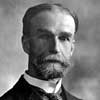 In the same year, Theobold Smith (an American microbiologist) demonstrated that heat actually killed cultures of chicken cholera bacillus and was also effective in protection from cholera. This proved that the microorganisms did not have to be viable to induce the protection. In the same year, Theobold Smith (an American microbiologist) demonstrated that heat actually killed cultures of chicken cholera bacillus and was also effective in protection from cholera. This proved that the microorganisms did not have to be viable to induce the protection. |
| 1888 | 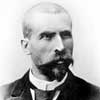 Roux and Yersin discovered the diphtheria toxin. Read More Roux and Yersin discovered the diphtheria toxin. Read More |
| 1890 | 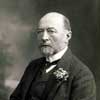 Von Behring and Kitasato demonstrated the presence of anti-toxin in the blood of individuals recovering from diphtheria. Von Behring was the first to use this antiserum in treating active disease. The forerunner to what we call “serotherapy” today. Read More Von Behring and Kitasato demonstrated the presence of anti-toxin in the blood of individuals recovering from diphtheria. Von Behring was the first to use this antiserum in treating active disease. The forerunner to what we call “serotherapy” today. Read More |
| 1891 | Robert Koch demonstrated the cutaneous hypersensitivity. Read More |
| 1892 | 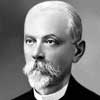 Dmitri Iwanowski provided the very first concrete evidence for the existence of a virus. He discovered that tobacco mosaic disease is caused by a virus which is a non-bacterial infectious agent. Unlike bacteria, viruses are capable of passing through fine-pored filters like porcelain and diatomite. Dmitri Iwanowski provided the very first concrete evidence for the existence of a virus. He discovered that tobacco mosaic disease is caused by a virus which is a non-bacterial infectious agent. Unlike bacteria, viruses are capable of passing through fine-pored filters like porcelain and diatomite. |
| 1893 | 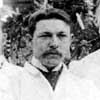 William Coley, an American cancer researcher and bone surgeon discovered a toxin (named after him – Coley’s Toxins) which is a combination of live bacteria and bacterial lysates to treat tumors. William Coley, an American cancer researcher and bone surgeon discovered a toxin (named after him – Coley’s Toxins) which is a combination of live bacteria and bacterial lysates to treat tumors. |
| 1894 | 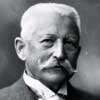 Richard Pfeiffer, German physician, and bacteriologist found that live cholera bacteria could be injected without ill effects into guinea pigs previously immunized against cholera and that blood plasma from these animals added to live cholera bacteria caused them to become motionless and to lyse. This could be inhibited by previously heating the blood plasma. He called this bacteriolysis known as the Pfeiffer Phenomenon or Isayev-Pfeiffer phenomenon. Read More Richard Pfeiffer, German physician, and bacteriologist found that live cholera bacteria could be injected without ill effects into guinea pigs previously immunized against cholera and that blood plasma from these animals added to live cholera bacteria caused them to become motionless and to lyse. This could be inhibited by previously heating the blood plasma. He called this bacteriolysis known as the Pfeiffer Phenomenon or Isayev-Pfeiffer phenomenon. Read More |
| 1895 to early 1900 | 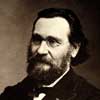 Immunology was preoccupied with the definition of the cellular (Elie Metchnikoff’s phagocytosis theory) as opposed to the humoral basis of the bactericidal defense. “Cellularists” believed that phagocytes, rather than antibodies, played the leading role in immunity. Immunology was preoccupied with the definition of the cellular (Elie Metchnikoff’s phagocytosis theory) as opposed to the humoral basis of the bactericidal defense. “Cellularists” believed that phagocytes, rather than antibodies, played the leading role in immunity. |
| 1896 | 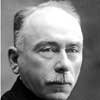 Jules Bordet, Belgian immunologist and microbiologist described an antibacterial, heat-labile serum component. Read More Jules Bordet, Belgian immunologist and microbiologist described an antibacterial, heat-labile serum component. Read More |
![]()
20th Century
1900-1930
| Year | Progress in the field of immunology |
|---|---|
| 1900 | Paul Ehrlich came up with antibody formation theory which states that a specific kind of cell can induce the formation of several antibodies. Read More |
| 1901 | In this year, Karl Landsteiner discovered the 3 different blood type groups: A, B, and O. He also discovered that when mixed, the blood of different blood type groups will begin to agglutinate (clump together). Read More |
| 1902 | Immediate hypersensitivity anaphylaxis, more commonly known as “allergies”, was observed by scientists Charles Richet and Paul Portier. The two observed that people are likely to develop an immune reaction when exposed to allergens (things that trigger the allergy). Read More |
| 1903 | Scientist Maurice Arthus has uncovered a type of hypersensitivity reaction (intermediate hypersensitivity) wherein antigens (foreign substances that trigger an immune response) tend to deposit in the walls of blood vessels, heart, and kidney. Soon after, the reaction was named after him, hence the “Arthus reaction”. Read More |
| 1905 | Like typical allergies, a “serum sickness” allergy happens when the body reacts to certain drugs that contain proteins that induce an adverse reaction instead of aiding in treatment. This year, Clemens von Pirquet and Bela Schick discovered this process. Read More |
| 1909 | Paul Ehrlich proposed his hypothesis about “immune surveillance” of tumor recognition and eradication. According to this hypothesis, the body balances controlling cell division and growth. Read More |
| 1911 | This year, virologist Peyton Rous discovered that bacteria with tumor-causing factors could pass through a specific filter. Such filters are called the Berkefeld ultrafilter. Read More |
| 1913 | The American Association of Immunologists (A.A.I.) was founded in Minneapolis. |
| 1916 | The first Journal of Immunology was published by A.A.I. and the New York Society for Serology and Hematology. Read More |
| 1917 | Karl Landsteiner had again proved his excellence in immunology when he discovered the molecule he called the “hapten.” When combined with larger molecules, the hapten can trigger the production of antibodies that bind to it. Read More |
| 1921 | More commonly known as skin allergy, cutaneous allergic reactions happen when the skin reacts to a drug adversely. Otto Prausnitz and Heinz Kustner discovered this phenomenon. Read More. |
| 1922 | Alexander Fleming discovered Lysozyme (an enzyme that catalyzes the destruction of the cell walls of certain bacteria). Read More |
| 1924 | Scientists have discovered the part of the immune system that includes the phagocytic cells (cells that can engulf or “eat” bacteria and other cells) found in the connective tissues. They have coined such a system as the reticuloendothelial system. Read More. |
| 1927 | This year, Hermann Muller discovered that X-rays cause mutagenesis in Drosophila. Read More |
| 1928 | Alexander Fleming discovered the antibiotic properties of Penicillium notatum fungi accidentally in his lab. Read More |
| 1930 | By chemically altering antigens in the laboratory, scientists Landsteiner and Kabat developed the principle of specificity of immune responses. Read More. |
![]()
1931-1950
| Year | Progress in the field of immunology |
|---|---|
| 1932 | The first commercially available antibacterial antibiotic sulfonamidochrysoidine was discovered. Read More |
| 1938 | John Marrack proposed the antigen-antibody binding hypothesis which states that under favorable and right conditions, antigens and antibodies bind together. Read More |
| 1940 | Previously discovered in Rhesus monkeys (hence the name), Rh antigens were discovered by Karl Landsteiner and Alexander Weiner. Such antigens are found on the surface of red blood cells and affect the reactions of the blood groups. Read More |
| 1942 | Along with Merrill Chase, Karl Landsteiner reported that anaphylaxis (allergic reaction) could be experimentally induced in the laboratory. This type of allergic reaction is fatal. Read More |
| 1944 | Allograph or transplantation (of cells, tis, or organs) have become rampant in recent decades. However, this year, a hypothesis about any possible cell, tissue, or organ rejection came about. |
| 1945 | In this year, Coombs test was developed. Also known as the antiglobulin test is used to detect antibodies against red blood cells found in the patient’s blood serum. Read More |
| 1946 | George Snell and Peter Gorer identified the major histocompatibility complex (MHC) in mice. It is the set of all surface proteins that are needed by the vertebrate immune system to detect foreign molecules and pathogens, which eventually determines their histocompatibility (“histo” meaning tissue). Read More |
| 1948 | Scientists discovered that among white blood cell types, plasma B cells are the greatest producers of antibodies. |
| 1949 | The experiments of scientists John Enders, Frederick Robbins, and Thomas Weller showed that the polio virus could be successfully cultured in the laboratory. Read More |
| 1950 | The process how antibody diversity was generated became known. The ascendancy of immunochemistry strengthened the case for antibodies as the fundamental unit of immunity, a term coined by Arrhenius. The Columbia History of Twentieth-century French Thought: Read More |
![]()
1951-1969
| Year | Progress in the field of immunology |
|---|---|
| 1951 | The vaccine against yellow fever (a disease transmitted by mosquitoes) was invented. Read More |
| 1952 | Jonas Salk discovered the vaccine for polio. Read More |
| 1953 | A complication known as the Graft-versus-host-disease was first observed after an unsuccessful bone marrow transplant. Read More |
| 1957 | In this year, Frank Burnet postulated the clonal selection theory, which states that cells (called lymphocytes) respond differently to a variety of antigens that try to invade the body. Read More |
| 1958 | The clonal selection theory was finally validated by Sir McFarland Burnet and Neils Jerne. |
| 1960 | The results of Porter and Edelman’s laboratory experiments (they enzymatically digested antibodies) led to the discovery of their chemical structure. In addition, the first real demonstration of a cellular basis for humoral and cellular immunity. The terms T and B cells became widespread. Read More |
| 1958 – 1962 | Jean Dausset and his colleagues discovered human leukocyte antigen (H.L.A.). Such antigen is responsible for the body’s response to foreign substances. H.L.A. is used to determine matches between donors and recipients for bone marrows. Read More |
| 1959 | Physician James Gowans discovered the phenomenon he called “lymphocyte circulation”. For instance, some lymphocytes were not stationary but “circulated” or moved from the lymphatic system to the blood and vice versa. (A Historical Perspective on Evidence-Based Immunolog). Read More |
| 1960 | Shortly after, lymphocyte blastogenic transformation, or the transformation of lymphocytes to other cells (usually larger and different), was discovered by Peter Nowell. Read More |
| 1961-1962 | In this year, Jacques Miller discovered the function of the thymus in immunity. As an organ, it produces different types of white blood cells, such as T cells or T-lymphocytes. Read More |
| 1961 | Peter Nowell showed that glucocorticoids, a type of steroid hormones, can impair the normal function of lymphocytes induced by phytohaemagglutinin (P.H.A.). (THE DISCOVERY OF THE INTERLEUKIN 2 RECEPTOR) Read More |
| 1963 | Colleagues Niels Jerne and Albert Nordin have developed a way to quantify antibody-forming cells in the laboratory. Such discovery has helped in the discovery of other antibodies as well. (A history of immunology) Read More |
| 1964 | This year, it was found that lymphocytes such as T and B cell work together to induce an immune response. |
| 1965 | Shinpei Kamakura, J.Gordon, L.D.MacLean and Louis Lowenstein discovered cell division and blastogenic factor (the process of production) in lymphocytes. |
| 1967 | The antibody immunoglobulin E (IgE), which plays an important role in an allergic response, was identified by Japanese scientist Kimishige Ishizaka. (The study of allergy by Japanese researchers: a historical perspective) Read More |
| 1968 | A special type of leukocytes (white blood cells) called “passenger leukocytes” were discovered by Ronald Guttman and William Elkins. They also found out that such leukocytes can act as “immunogens” or the “main rejecters” during a cell, tissue, or organ transplant. (THE ROLE OF PASSENGER LEUKOCYTES IN REJECTION AND “TOLERANCE” AFTER SOLID ORGAN TRANSPLANTATION: A POTENTIAL EXPLANATION OF A PARADOX) Read More |
| 1969 | This year, Eva Cerotippi and colleague Peter Perlman developed the assay to measure lysis in lymphocyte Cr51. (Response to phytohaemagglutinin of lymphocytes from mice treated with anti-lymphocyte globulin. Read More |
![]()
1970-1979
| Year | Progress in the field of immunology |
|---|---|
| 1971 | The Enzyme-linked immunosorbent assay (ELISA) was invented by Peter Perlmann and Eva Engyall. This type of assay is used to detect the presence or absence of an antigen or antibody in a sample. (Enzyme Immunoassay (E.I.A.)/Enzyme-Linked Immunosorbent Assay (ELISA)). Read More |
| 1972 | After years of searching, scientists finally came up with an illustration of the structure of the antibody molecule. (ANTIBODY STRUCTURE AND MOLECULAR IMMUNOLOGY – Nobel Lecture) Read More |
| 1973 | Dendritic cells, which appear to be “net-like” or “nerve-like” in appearance, were first described by Ralph Steinman. (RALPH STEINMAN AND THE DISCOVERY OF DENDRITIC CELLS – Nobel Lecture) Read More |
| 1974 | Niels Jerne proposed his “Immune Network Hypothesis,” which states that the body’s immune system is composed of interconnected cells and molecules. These cells and molecules work together to help the body fight against infections. (Immune Network Theory) Read More |
| 1975 | George Kohler and Cesar Milstein have uncovered how monoclonal antibodies are produced. These antibodies are helpful in the prevention of the development of some cancers. (Making monoclonal antibodies) Read More |
| 1976 | Japanese scientist Susumu Tonegawa identified cell recombination in genes coding for immune cells. (The Birth of Molecular Immunology) Read More |
| 1978 | Two years after, Tonegawa discovered the process and provided direct evidence for the somatic rearrangement of immunoglobulin genes. (TWO GENES BECOME ONE—SOMATIC REARRANGEMENT OF IMMUNOGLOBULIN GENES) Read More |
![]()
1980-1999
| Year | Progress in the field of immunology |
|---|---|
| 1980-1983 | Scientists R.Gallo, K.Smith, and T.Taniguchi have consequently discovered and characterized interleukins 1 and 2 (also known as IL-1 and IL-2). Such interleukins are responsible for the mediation of communication between different cell types. |
| 1983 | Ellis Reinherz and his colleagues have discovered the T cell antigen receptor. This receptor is activated only when a specific antigen binds to it. (First Sighting of the Elusive T Cell Antigen Receptor) Read More |
| 1986 | Using genetic engineering, a vaccine for Hepatitis B was invented. (Achievements in Public Health: Hepatitis B Vaccination — United States, 1982–2002) Read More |
| 1988 | Christopher Rudd discovered several biochemical indicators of the activation of T cells. Such indicators were CD4- and CD8-p56lck complexes. |
| 1990 | Also known as alymphocytosis, severe combined immunodeficiency (SCID) is a rare genetic disorder characterized by an impaired function of the T cells and B cells. As a result, the person with SCID has a fragile immune system. Fortunately, in this year, a successful gene therapy was done. (Correction of Genetic Blood Defects by Gene Transfer) Read More |
| 1991 | Colleagues Sadegh-Nasseri and Ronald Germain published their work about the various roles of peptides for major histocompatibility class structures. Read More |
| 1992 | David Allman and Michael Cancro discovered transitional B cell. As their name suggests, these cells link mature and immature bone marrow cells. Read More |
| 1994 | Proposed by Polly Matzinger, the ‘Danger’ model of immunological tolerance shows that the immune system itself cannot decipher whether an object is foreign or not. Instead, what it can distinguish is whether a cell is harmful to the body or not. Read More |
| 1995 | James Allison described the protein CTLA-4 in regulating the function of some T cells. Read More |
| 1996-1998 | Scientists have identified several toll-like receptors responsible for the body’s innate immunity. |
![]()
2000-2016
| Year | Progress in the field of immunology |
|---|---|
| 2000 | Scientist Charles Mills discovered the two type of macrophages: M1 and M2. Macrophages are cells that engulf smaller cells. On the one hand, M1 prevents cell division and initiates cell death, whereas M2 induces cell proliferation and repair. (Journal of Immunology) Read More |
| 2001 | Scientists have discovered the gene which controls the development and activity of regulatory T cells. They called this the FOXO3 gene. Read More |
| 2005 | Ian Frazer developed the first vaccine for the sexually transmitted disease caused by the human papillomavirus. Read More |
| 2009 | H1N1 Swift Flu outbreak occurred the 2nd time in the modern human history after 1918. Read More |
| 2010 | This year, the first vaccine developed for cancer was produced commercially. In particular, the cancer Provenge was developed to treat prostate cancer. (F.D.A. Approval) Read More |
| 2011 | Carl June reported using T cells to treat CD19+ malignancies (tumors). (New England Journal of Medicine) Read More. |
| 2013 | AAI celebrated its 100th year anniversary. |
| 2014 | Consequently, another batch of drugs, namely Nivolumab and Pembrolizumab, were approved by the Food and Drugs Administration for the treatment of melanoma. (Hematology/Oncology (Cancer) Approvals & Safety Notifications) Read More |
| 2015 | The first licensed anti-parasite malaria vaccine was approved in Europe. Read More |
| 2016 | In this year, scientist Matthew Halpert characterized the roles of dendritic cells in the processing and presenting antigens to the T cells of the immune system. (Baylor scientists I.D. dendritic cells as new cancer therapy targets) Read More. |
Top 12 Immunology News In 2017
Immunology is one of the sub-divisions of biology (to be precise biomedical science) that encompasses the study of immune system in all living organisms. In this page, learn biological advancements and research news in the field of immunology and related top stories in 2017.
Top 15 Immunology News in 2018
Our immune system helps us battle pathogens and prevent illnesses. Here are the top 15 immunology news in 2018 including breakthroughs and discoveries.
Top 10 Discoveries in Immunology 2019
Every year, it is becoming clear that our immune system is significantly more complex than before. Here are the top 10 discoveries in immunology 2019.
Top 10 Immunology News of 2020
The immune system is one of the most complex and multi-layered systems of our body. Explore the top 10 discoveries in immunology for 2020 here.
Top 15 Immunology News of 2021
The 2021 discoveries in Immunology showcase the recent developments and their relevance during the upsurge of COVID-19 cases. This treatise describes the development of immunology as a scientific discipline focused on its foundation. Let us glance at these 2021 research outcomes from a broader perspective.
Top Immunology News of 2022
Discover 2022's key immunology breakthroughs: novel asthma treatments, HIV 'memory' cells, mRNA vaccine insights, and allergy research advancements.
![]()
Cite This Page
APA7MLA8Chicago
BioExplorer.net. (2025, May 28). History of Immunology. Bio Explorer. https://www.bioexplorer.net/history_of_biology/immunology/.
BioExplorer.net. "History of Immunology" Bio Explorer, 28 May 2025, https://www.bioexplorer.net/history_of_biology/immunology/.
BioExplorer.net. "History of Immunology" Bio Explorer, May 28 2025. https://www.bioexplorer.net/history_of_biology/immunology/.



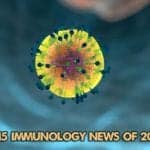
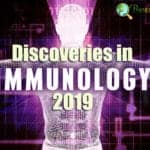


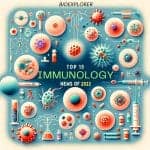










It is excellent and resplendent information to provide to the society.
This is excellent. This is a good and helpful collection for students undertaking Immunology Course.